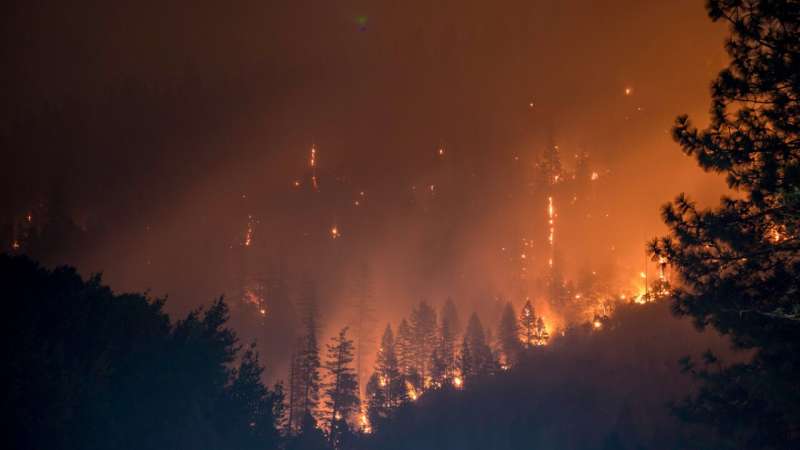This article has been reviewed according to Science X's editorial process and policies. Editors have highlighted the following attributes while ensuring the content's credibility:
fact-checked
peer-reviewed publication
trusted source
proofread
Research supports use of managed and prescribed fires to reduce fire severity

In a study recently published in Forest Ecology and Management, scientists found that fires in America's dry conifer forests are burning hotter and killing more trees today than in previous centuries. The main culprit? Paradoxically, a lack of fires.
Dr. Sean Parks is a research ecologist with the USDA Forest Service Rocky Mountain Research Station. He and his colleagues used satellite data to characterize fire severity in dry conifer forests during a contemporary timeframe (1985-2020), and then compared it to fire severity during a historical timeframe (1600-1875).
Their results show that without frequent, low-severity fires, like those experienced in the past, fires that burn today are more severe and more likely to kill trees. Such extensive severe burning over time threatens the long-term survival of dry conifer forests on the landscape.
America's dry conifer forests are no strangers to fire; historically, these forests burned every 5-35 years. Historical fires were generally of low to moderate severity, which meant many trees survived. Starting in the late-1800s, however, fire was effectively excluded from dry conifer forests.
This was primarily due to a trio of causes: direct fire suppression, intensive livestock grazing, and the forced disruption of cultural burning, a well-documented practice for many Indigenous communities prior to colonization. In the absence of fire, these forests have grown denser as flammable materials like leaf litter and dead trees have built up. This has triggered concern that today's fires will be hotter and more severe compared to those that burned prior to 1875.
"Our findings demonstrate that contemporary dry conifer forest fire regimes are highly departed from historical conditions, burning with higher severity over a greater proportion of area and threatening the long-term persistence of dry conifer forests on the landscape," said Parks.
Scientists were also able to compare areas designated as federal wilderness with those that are not. They found that non-wilderness areas experienced slightly more severe fire than wilderness areas. As commercial enterprises such as logging are restricted in most wilderness areas, this suggests that the absence of historical fires and the resulting buildup of flammable materials play a larger role in today's increasingly severe fires than historical logging activities.
As a case study, scientists looked at the Gila Wilderness. In the Gila, they found that a decades-long policy of managing fire, including allowing it to burn in certain scenarios, lessened the severity of fires in dry conifer forests from 1985-2020 compared with other areas in the Southwestern region that was a focus of the study.
This case study reinforces the concept that low-severity fire begets low-severity fire, and demonstrates that frequent low-severity fire is possible even as our climate has become warmer and drier. Scientists believe that this approach, in addition to prescribed fire and other management actions that reduce fuels, could serve as a roadmap for restoring resilience to dry conifer forests across the western U.S.
"Our findings emphasize the indispensability of restoration and proactive measures in safeguarding our forests," Parks said.
More information: Sean A. Parks et al, Contemporary wildfires are more severe compared to the historical reference period in western US dry conifer forests, Forest Ecology and Management (2023). DOI: 10.1016/j.foreco.2023.121232
Journal information: Forest Ecology and Management
Provided by USDA Forest Service




















